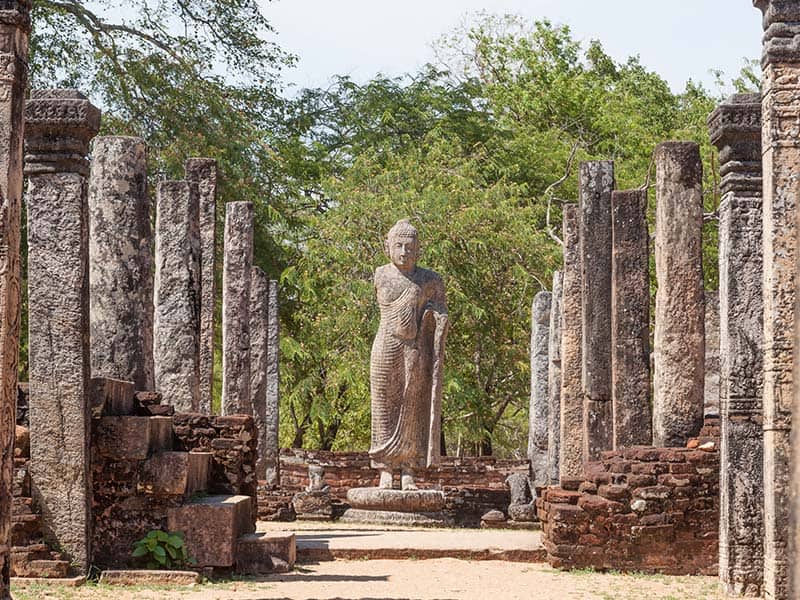The Atadage is an important building in the city limits of ancient Polonnaruwa. It belongs to the Dalada Maluva, a group of the most ancient and revered religious structures within the ruined medieval capital. It is named after the eight main relics enshrined here. It is a smaller building than the similarly-named Hetadage and is also a stone construction. It has 54 pillars, or at least 54 of them are still remaining. The roof was most probably made of wood and tiles and indeed most of these structures would have included a whole profusion of wooden elements to them. Atadage is the brainchild of King Vijayabahu I of the 10th Century AD, founder of the glorious Polonnaruwa Kingdom. He was responsible for defeating the already rather weakened South Indian Chola colonists who had held sway for many years, but the king had to face even more troubles later during his reign.
An inscription in the vicinity called the Velikkara or the Velaikkara Inscription points to this.
The Velaikkaras were the Tamil elite guards in charge of looking after the Tooth Relic. The Relic was the symbol of Sri Lankan kingship and a prized possession if one was to exert dominion over the island. After long years of service, the guards rebelled against the king and took the Tooth Relic into their possession.
The rebellion was serious enough for Vijayabahu to flee from the ancient city of Polonnaruwa. The inscription itself is written in Tamil. It can be assumed that the Tooth Relic was indeed enshrined and guarded here in the Atadage, as no more buildings from Vijayabahu’s time remain. There is one Buddha image here, while there were three originally. The statue is in rather poor condition like those at the neighboring Hetadage.
Written by Vasika Udurawane for Travel Lanka Compass



0 Comment